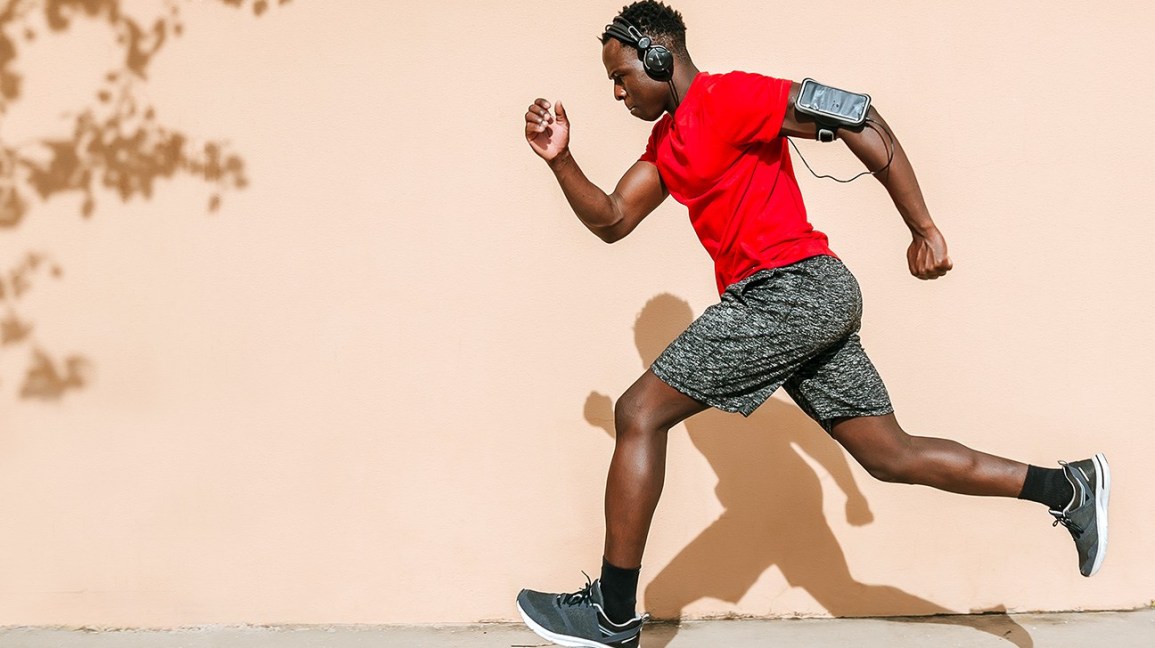Not only does exercising have various physical and health benefits, it also has many neurological advantages, including improved neurogenesis (increased brain cell production) and enhanced mental strength and toughness. More people around the world are becoming fitness conscious and setting goals to develop the habit of training during Ramadan.
Abhinav Malhotra, Elite Master Trainer at Fitness First Middle East says, “While exercising during Ramadan is important, fueling your body with the right food after iftar is equally important. You need to maintain a high-quality protein intake to support your training and stimulate muscle protein synthesis (making of new muscle cells).”
To help develop a safe fitness routine during the holy month, Abhinav Malhotra, Elite Master Trainer at Fitness First Middle East shares a wholesome guide that includes the best exercises to do, workouts to avoid and the optimum time of the day to exercise.
Start resistance training
If any form of exercise is the best to do in Ramadan, it is resistance training. Resistance training can be done using either free weights or your own bodyweight. All compound movements like squats, lunges, step-ups, deadlifts, pulling and pushing, exercises like rows, pull-ups, push-ups and presses are the best to carry out when doing resistance training. During the holy month, the body is mostly in a catabolic state and it is easy to lose muscle mass and feel weak. This type of training will help preserve vital muscle mass, strength, improve hormone profile (testosterone, cortisol, insulin, growth hormone) and improve emotional state by producing happy hormones called endorphins.
Resistance training can also help with borderline diabetes, as it improves insulin sensitivity and stabilises blood sugar levels by increasing the size of muscle cells and number of insulin receptors on muscle cells, making them more available for carbohydrate storage in the form of glycogen.
TIP: All these movements can be done with your own bodyweight at home. If you have free weights like dumbbells or kettlebells, then add resistance to these movements to make them harder. If you are without weights, improvise by adding resistance in the form of heavy bags, heavy water bottles or suitcases. Make sure to keep the total training time to 40-45 minutes.
Avoid high intensity cardio
While fasting, avoid high intensity cardio or high intensity circuit training. This form of training relies heavily on stored glycogen as an energy substrate, which is not readily available due to the prolonged fasting. The absence of adequate amounts of glycogen can lead to loss of muscle mass, as protein is converted to glucose,via the process of gluconeogenesis to support quick energy demands. Additionally, this form of training leads to more sweating, resulting in loss of water and electrolytes – which is not ideal during Ramadan.
Schedule your training
During Ramadan, it is ideal to train right before Iftar or 1-2 hours after Iftar. Both have their own advantages and disadvantages and the choice solely depends on personal preference.
Training before Iftar in a fasted state might sound challenging but most people do enjoy it, especially after the initial couple of days of training. The body gets used to training in a fasted state and develops mental focus and intensity tolerance. This is because the insulin levels are low during fasting, which leads to production of more neurotransmitters. Neurotransmitters help you focus better and intensify your workouts, while utilising stored fats more efficiently during the workouts.
Fasted training (before Iftar) also leads to better partitioning of nutrients which are consumed during Iftar. After a full day of fasting, followed by a training session, the body will be hungry for nutrients, therefore consumed carbohydrates will be easily stored as muscle glycogen and proteins will quickly go to the damaged muscle fibres to kickstart repair and growth. Training before Iftar will also allow time to enjoy with family and friends after Iftar and give you enough time to sleep.
Training after Iftar in a fed state is another ideal time to schedule in training. Many people feel more energised to train after eating than when they are fasting. If you are one of those people, consider exercising after breaking your fast. With the presence of more glucose and amino acids circulating in the blood, the body is more favourable to support high volume training. The higher the number of workouts, the more calories you will burn and more you will build muscle hypertrophy.
TIP: It is important to get the training sessions in and not miss any workouts. If you’re a person who feels more sluggish after Iftar and have difficulty sleeping after intense training sessions in the evening, then try switching to fasted training before Iftar.














